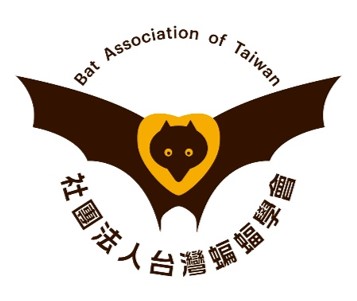蝙蝠研究
2011_以分子標記探討台灣小蹄鼻蝠的食性_呂佩樺
出版年份:2011
研究生:呂佩樺
分類:碩士論文
題目:以分子標記探討台灣小蹄鼻蝠的食性
Title:Dietary investigation of Formosan horseshoe bat(Rhinolophus monoceros) based on molecular markers
摘要:
蝙蝠是唯一會飛行的哺乳動物,在夜晚出沒,多數有回聲定位能力,即俗稱的超音波,用以判斷周遭環境及偵測獵物。過去研究蝙蝠的食性中,常以顯微鏡觀察蝙蝠排遺中的昆蟲殘骸並加以分類。但此方法在研究上卻有許多難以突破的瓶頸,如排遺中僅有少數碎屑殘留,常連科別亦無法分辨,因此少有將蝙蝠食性分類至科以下的相關文獻。根據排遺中碎屑的觀察,已知台灣小蹄鼻蝠(Rhinolophus monoceros)多以夜行性鱗翅目昆蟲為主要食物來源。過去野外調查結果發現台灣中小型鱗翅目昆蟲中蛾類有6大總科,其中具有簡單聽器的有夜蛾總科之夜蛾科、燈蛾科、舟蛾科,和衣蛾總科的衣蛾科。而具有完整聽器的有尺蛾總科尺蛾科以及螟蛾總科,不具聽器的有麥蛾總科草潛蛾科和捲葉蛾總科。本研究希望藉由cytochrome c oxidase I (COI)作為DNA條碼,研究台灣中部惠蓀林場和蓮華池附近台灣小蹄鼻蝠排遺中的蛾類和其分類,並證實台灣小蹄鼻蝠可以吃到具有聽器的蛾類。本論文建構113種蛾類DNA條碼作為資料庫,並從包括台灣小蹄鼻蝠(Rhinolophus monoceros)之六種蝙蝠共19隻個體之樣本所定序的排遺COI序列,再加上從NCBI上現有的鱗翅目昆蟲COI序列共同進行親緣關係分析,最後計算出排遺中各科蛾類的出現頻度(FO)。結果顯示,台灣小蹄鼻蝠(Rhinolophus monoceros)共15隻個體排遺中有定序出蛾類COI序列的有10隻個體排遺,共鑑定出5科32筆共21種蛾類COI序列,其中有具發達聽器的尺蛾科蛾類共7筆5種;其他5種蝙蝠共48隻蝙蝠個體中有9隻5種蝙蝠定序出蛾類COI序列,總共定序出24筆14種蛾類COI序列,其中有具發達聽器的尺蛾科蛾類共4筆2種,大都是編號052410的青尺蛾。綜合以上結果可以推論,以分子標記方法配合親緣關係樹分析,可以較深入的研究蝙蝠的食性至少到科以下,而研究發現台灣小蹄鼻蝠可以吃到許多具有聽器的蛾類,其中也包含聽器發達的尺蛾科。
Abstract:
Bats are the only mammals that can fly in the dark. Most of them have the abilities to detect preys and environments by echolocation. In the previous studies of dietary in bats, biologists always used microscopes to find in feces what the remains are and which orders the remains belong. However, there were so many problems that they faced. The most inconvenient problem was that the remains in feces were too few to classify, especially in families or species. Therefore, many further problems were still remained to be solved. By using microscopes, Rhinolophus monoceros that the species I studied were considered to be fed by moths. Thus, I classified six superfamilies from moths that are usually seen. Noctuoidea that Noctuidae, Arctiidae, and Notodontidae belongs to and Tineoidea are considered to have the simple ears. Geometridae, which is classified in Geometroidea, and Pyraloidea are considered to have the complete ears. Gelechioidea as well as Tortricoidea are considered to hve no ears. The purposes of this study were to find what Rhinolophus monoceros eat and to classify the remains in families or species by using DNA barcodings (cytochrome c oxidase I, COI). First of all, I constructed 113 DNA barcodings from moths. Then, DNA barcodings of ten individuals of Rhinolophus monoceros, and other 5 bat species (9 individuals) were done to analysis. I also constructed phylogeny trees by using NCBI databases and all DNA barcodings in my study, so that I can classify the unknown sequences into different families or superfamilies. At the end, I caculated frequency of occurrence (FO) from every families in feces. The results revealed that we can study dietary of bats by using molecular markers and phylogeny trees. There are 21 species of moths in the feces from 10 Rhinolophus monoceros individuals. However, there are 5 species that have complete ears. All of them are in the family of Geometridae. On the other hands, there are 14 species of moths in the feces of 9 individauls from different kinds of bats. (not Rhinolophus monoceros) And, there are 2 moth species that have complete ears. All of them are in the family of Geometridae. But most of them are in the subfamily of Geometrinae. From those results, I concluded that we can use DNA barcodings as well as phylogeny trees to research dietary of bats, especially in different families of moths. We also found that Rhinolophus monoceros can capture heard moths.
